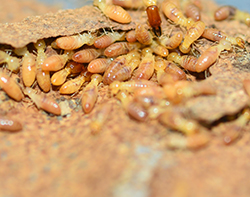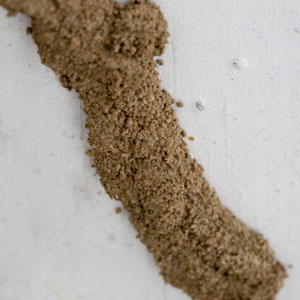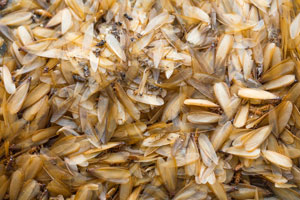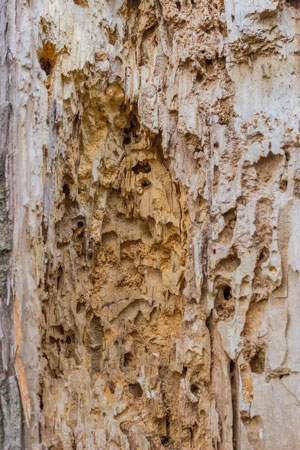Termite Infestation Signs – North-easterners Beware
 The oldest, grandest homes in the country are located in the Northeastern U.S. We take great pride in our history. But our historic, long-standing homes are especially susceptible to a silent, hidden threat — subterranean termites. These pests are attracted to damp wood, and many older homes have leaky pipes and gutters. The water drips onto the wooden siding, framework and foundation creating an ideal habitat for subterranean termites. These pests have the ability to destroy a home’s foundation and literally bring the entire structure down.
The oldest, grandest homes in the country are located in the Northeastern U.S. We take great pride in our history. But our historic, long-standing homes are especially susceptible to a silent, hidden threat — subterranean termites. These pests are attracted to damp wood, and many older homes have leaky pipes and gutters. The water drips onto the wooden siding, framework and foundation creating an ideal habitat for subterranean termites. These pests have the ability to destroy a home’s foundation and literally bring the entire structure down.
“Termites cause over $5 billion in property damage each year, damage that’s generally not covered by insurance.” Credits: An NPMA Interview for Termite Awareness Week – Entomology Today
Termite Infestation Signs – Newer Homes Not Exempt.
 Your home doesn’t need to be on the historic register to be in danger. Some beautiful older homes, just a decade or so old, may have leaky pipes and gutters. Many roofs have a 20 year life-span, and as the roof nears that time limit, leaks can occur creating water damage and potential termite habitat. Around the 20-year point for new homes, the plantings around the home have grown and matured, and may be in contact with the home, creating an entrance way for termites. Yard debris piles may be present, additional termite habitat.
Your home doesn’t need to be on the historic register to be in danger. Some beautiful older homes, just a decade or so old, may have leaky pipes and gutters. Many roofs have a 20 year life-span, and as the roof nears that time limit, leaks can occur creating water damage and potential termite habitat. Around the 20-year point for new homes, the plantings around the home have grown and matured, and may be in contact with the home, creating an entrance way for termites. Yard debris piles may be present, additional termite habitat.
Termite Infestation Signs – How do you know if termites are present?
 Here are 8 warning signs that termites may be present:
Here are 8 warning signs that termites may be present:
- Discarded Termite Wings: Termites annually swarm in their winged, reproductive form looking for mates, to breed with and establish a new colony. They soon discard their wings. Look on windowsills and doors especially. If you discover many discarded wings, the new colony is not far away.
- Neighbors Reporting Termites: If you find that neighbors have a termite problem, your home may also be at risk.
- Termite Colonies Nearby: As you remove any wood lying around your property including branches, old tree stumps and long-standing firewood piles, you may discover a termite colony. The fact that this colony is on your property puts your home at risk.
- Presence of Mud Tubes: This is a 5-alarm situation. You discover a mud tube rising from the ground and into the wooden foundation, framework or siding of your home. You most certainly have a termite infestation. Subterranean termites build these tubes in order to remain hidden as they travel up from the ground to the tasty wood that makes up your home.
- Soft, Hollow-Sounding Wood: As you inspect your home, tap the wood. Does it feel soft? Sound hollow? There may be termites or termite damage beneath.
- Darkened or Blistered Wood: Notice dark spots or blistering in the wood? Check it out more thoroughly for the presence of termites.
- Bubbling or Cracked Paint: This may indicate you have water damage, need to repaint, or it may indicate you have termites.
- Sawdust-Looking Feces Piles: These indicate a termite nest may be near.
Termite Infestation Signs – What to do if you discover termites.
 If you discover or even suspect the presence of termites, you’ll need to take the following actions immediately in order to save your home:
If you discover or even suspect the presence of termites, you’ll need to take the following actions immediately in order to save your home:
- Inspect your home thoroughly for the presence of the termite colony or colonies.
- Inspect your property for the same.
- Exterminate all termite colonies in your home and on your property.
- Replace all damaged wood.
- Locate and repair all water leaks in your roof, plumbing and foundation.
As we said, the presence of termites is equivalent to a 5-alarm fire. If you had a fire, you’d call the fire department. If you believe you have termites, call a licensed, professional termite exterminator who will rid your home of termites and guide you through the steps you need to take to restore your home and property to termite-resistant health.












Recent Comments